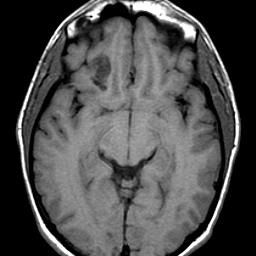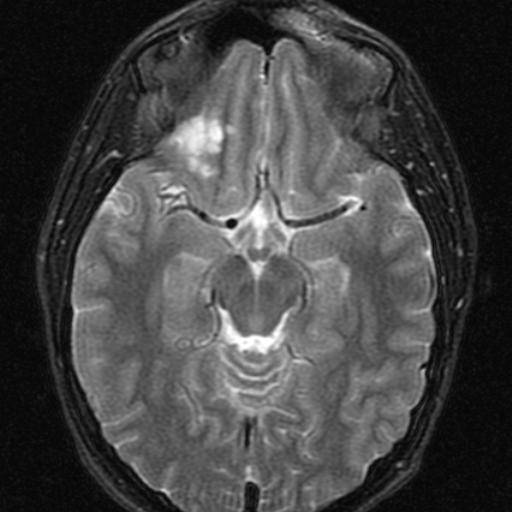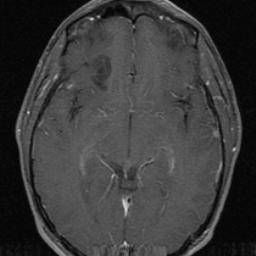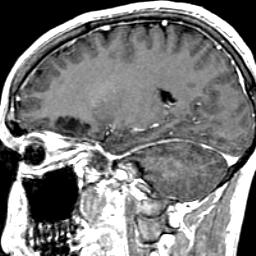
Dysembryoplastic neuroepithelial tumor is a benign tumor of neuroepithelial origin arising from the cortical or deep gray matter.These tumors virtually always manifest in patients with medically refractory partial seizures. The vast majority of patients are younger than 20 years, and males are more commonly affected. The temporal lobe is the most common site (62%), followed by the frontal lobe (31%). Although the vast majority of dysembryoplastic neuroepithelial tumors are confined to the cortical gray matter, they may also arise within the caudate nucleus, cerebellum, or pons.
he imaging appearance of dysembryoplastic neuroepithelial tumor is similar to those of other low-grade glial tumors, and in some cases it may be impossible to distinguish this tumor from diffuse astrocytoma, ganglioglioma, oligodendroglioma, or other low-grade neoplasms.
CT, the tumor manifests as a hypoattenuating mass that may occasionally have areas of calcification. Remodeling of the adjacent inner table of the skull may also be seen.







At MR imaging, dysembryoplastic neuroepithelial tumors most commonly manifest as cortical masses that are hypointense on T1-weighted images and hyperintense on T2-weighted images without surrounding vasogenic edema. ome lesions may appear as an enlarged gyrus, producing a soap bubble appearance at the cortical margin.
<30% of dysembryoplastic neuroepithelial tumors enhance following contrast.
Focal cortical dysplasia is commonly seen in association with DNETs, and unless a component can be identified clearly separate from tumor cells, then it does not warrant a concurrent separate diagnosis. If, however, such a separate component is present, then it represents Blumcke classification IIIb focal cortical dysplasia
Importantly, DNETs are negative for IDH mutations, TP53 mutations, and do not demonstrate 1p19q co-deletion 8. These features are helpful in distinguishing DNETs from low-grade astrocytomas (usually IDH mutated) and oligodendrogliomas (IDH mutated and 1p19q co-deleted).
Reference:
https://doi.org/10.53347/rID-1251
Gaillard, F. WHO classification of CNS tumors. Reference article, Radiopaedia.org. (accessed on 20 May 2022) https://doi.org/10.53347/rID-2277DOI:https://doi.org/10.53347/rID-2277